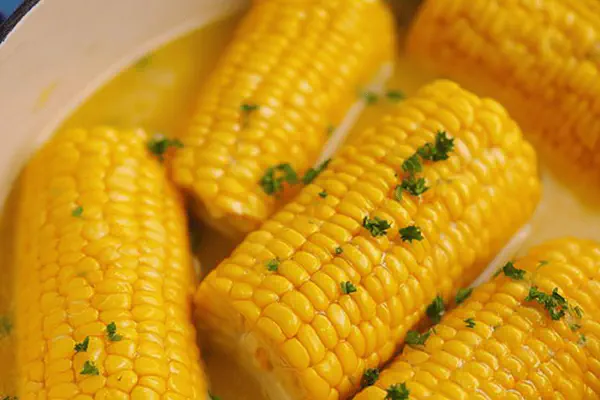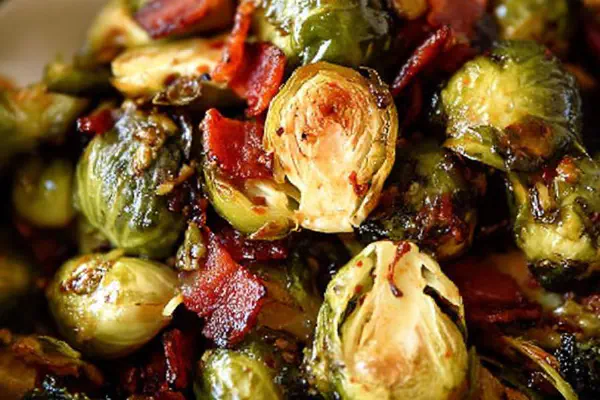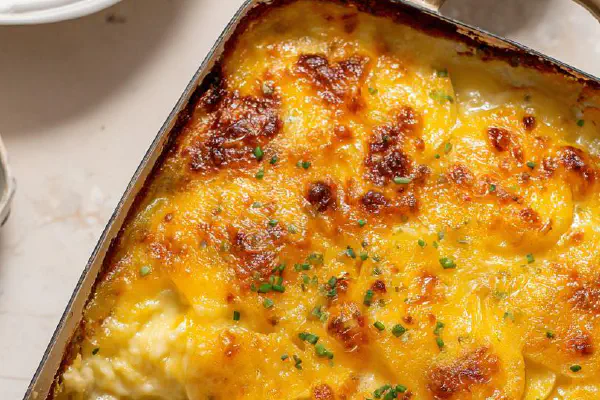Boiled Corn On Cob

By Emma
Certified Culinary Professional
Ingredients
- 8 ears fresh corn on the cob husked
- 1/2 cup salted butter or unsalted with pinch salt
- 1 cup whole milk or substitute heavy cream for richer flavor
- 1/4 cup granulated sugar optional but recommended to balance corn natural sweetness
- Salt to taste
- Black pepper freshly ground optional
- Chopped parsley fresh optional
- Preferred corn seasoning mix optional such as smoked paprika or chili powder
About the ingredients
Method
- Fill a large heavy-bottomed stock pot or Dutch oven about 3/4 full with cold water. Add butter salt milk and sugar directly to the pot.
- Turn heat to medium and stir occasionally until a gentle boil forms. Not a rolling boil because that bursts kernels.
- Drop the corn ears in carefully. They should be nestled comfortably, not crowded or layered on top.
- Maintain a gentle boil, slight bubbling enough to see steam rising but not violent splashes. Cook around 12 to 13 minutes but watch ears closely.
- Look for bright yellow kernels with a slight plumpness and a sheen. Tip: poke a kernel with tongs. It should resist slightly but release milky juice not starchy dry.
- When ready lift corn carefully. Tap each ear side to side over the pot to flick off water droplets that cling.
- Transfer to a warm serving tray or plate. Immediately sprinkle or brush butter, salt, pepper, and parsley or corn spice blend.
- Eat while still hot. Corn staling fast once cooled especially boiled with milk content.
- If fresh corn not available kernels can be frozen but reduce cooking time to 7 minutes to avoid sogginess.
- If no milk on hand swap it out with a bit of cream or omit entirely replacing volume with water but expect less rich flavor.
- Avoid boiling corn excessively thick husk ears - kernels split and mushy texture ruins bite.
- Store leftovers wrapped tightly but best consumed same day for crunch and sweet pop.
Cooking tips
Chef's notes
- 💡 Use a large pot filled about three quarters with cold water to submerge all ears without crowding. Add butter salt sugar and milk before heating; this lets flavors meld gradually as water heats. Avoid adding butter after boil starts, doesn’t integrate well. Keep heat medium to maintain gentle bubble, not a rolling boil, which bursts kernels and makes mess. Watch steam haze on surface, that shimmer signals right temperature. Timing is flexible 12 to 13 minutes usually but check kernel feel early to avoid mush.
- 💡 Tap kernel with tongs when close to done. Should give slight resistance then squirt milky juice, not dry or chalky. Color goes bright yellow with plumpness and sheen. If kernels dull or soft means overcooked. After lifting corn out of pot tap ears sharply side to side over pot to shake off excess water; water dilutes melted butter after plating and messes texture. Draining well critical if you want seasoning stick. Never throw seasoning in pot during boil, it waters down flavor.
- 💡 Butter can be salted or unsalted but if unsalted add pinch salt to pot for balance. Whole milk preferred for silky mouthfeel during cooking; adds subtle fat and thickness in coating kernels. Can substitute heavy cream for richer flavor but beware longer heat retention can overcook corn; temper boil time if using cream. Sugar optional but adds natural sweet notes; skip if monitoring carbs. Fresh husked corn best, frozen works but reduce cook time to about 7 minutes to avoid soggy kernels. Frozen corn tends to soften faster under heat.
- 💡 After cooking season ears immediately with salt pepper fresh chopped parsley or a dry corn spice blend like paprika or chili powder. Parsley adds fresh earthiness, spices add warmth. Seasoning after draining avoids dilution and keeps punchy flavor. Keep butter melted or soft for brushing or sprinkle salt and pepper evenly. Leftovers don’t store well for crunch; cool corn gets rubbery and loses pop quickly. Wrap tight but eat same day if possible.
- 💡 If milk unavailable swap out volume with cream or just water but expect changes in mouthfeel and glossiness. Cream richer but heavier, water thinner and less silky. Adjust cooking time based on kernel firmness feel. Husk thick ears carefully; overboiling thick husks leads to split kernels and mush texture ruins bite. Cook gently, keep boil soft like shimmer surface and slight steam. Corn cook times vary; use color and tongs test not clock strictly. Timing always a range, corn ears differ.
Common questions
How to tell when corn is done?
Watch kernel color bright yellow, slight sheen. Tap with tongs; resistance but milky juice oozes. If kernels dry or soft mushy, overcooked. Visual and tactile cues best not timers.
Can I use frozen corn?
Yes but reduce cook time to around 7 minutes. Frozen kernels soften faster, risk soggy texture. Fresh preferred but frozen good backup. Adjust boiling intensity gentle simmer to avoid damage.
Why avoid rolling boil?
Rolling boils hit kernels hard burst skins, water foams over. Fluid agitation ruins texture. Gentle simmer with slight bubble keeps kernels intact, steadier cooking. Less mess and better bite.
How to store leftovers?
Wrap tightly, refrigerate soon. Best eaten same day to keep texture crisp. Cold corn gets rubbery losing natural juice pop. Reheating dries it out more; minimal success.



